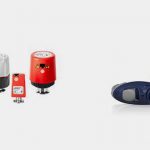Vacuum pumps come in two basic varieties: the ‘wet’ kind, which is essentially a hydraulic pump, and the pneumatic, ‘dry’ variety. Both are used to create suction, which is imparted onto a dynamic substance in order to ‘pull’ more of that substance from the far end of a tube — and generally, to use that same substance in order to perform some sort of work at the tube’s far end. So what’s the difference between wet and dry vacuum pumps? Quite a bit, actually.
Compressibility
Perhaps the most obvious difference between using fluid vs. gas to do work is that gas can be compressed — fluid does not compress. On the one hand, that means that when a hydraulic vacuum pump moves X amount of fluid on this end, there’s an immediate and corresponding movement of X distance on the other side of the system, whereas a pneumatic system is going to have a bit of a delay, and the movement isn’t going to be as precise.
On the other hand, that very give that makes pneumatics less precise can be a lifesaver. If you have, for example, a heavy load and it needs to be brought gently to the ground, a pneumatic system’s ability to dynamically respond via the compression of the pneumatic gas makes that level of delicacy much easier.
Elasticity
Similarly, hydraulic fluid is nonelastic — it doesn’t attempt to ‘snap back’ to a standard pressure if it gets compressed or thinned out. The air in a pneumatic system is elastic, and that elasticity contributes, again, to a pneumatic system’s ability to dynamically respond to changes in the load.
Flow Rate
Because gas flows much more quickly than fluid through the same amount of space, pneumatic systems are snappy and quick compared to hydraulic systems. ‘Dry’ vacuum pumps can move enormous volumes of air in the same span that a ‘wet’ vacuum pump can move only a modest amount of hydraulic fluid.
Pneumatic pumps, then, are good for moving things quickly and dynamically — hydraulic pumps are better for precision movements that involve extremely large loads. Thus, for example, jackhammers tend toward pneumatics whereas backhoes tend toward hydraulics.























